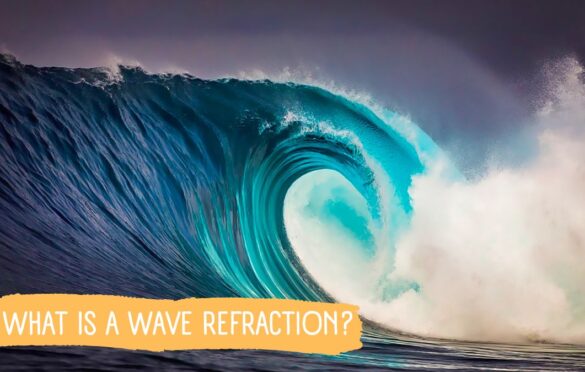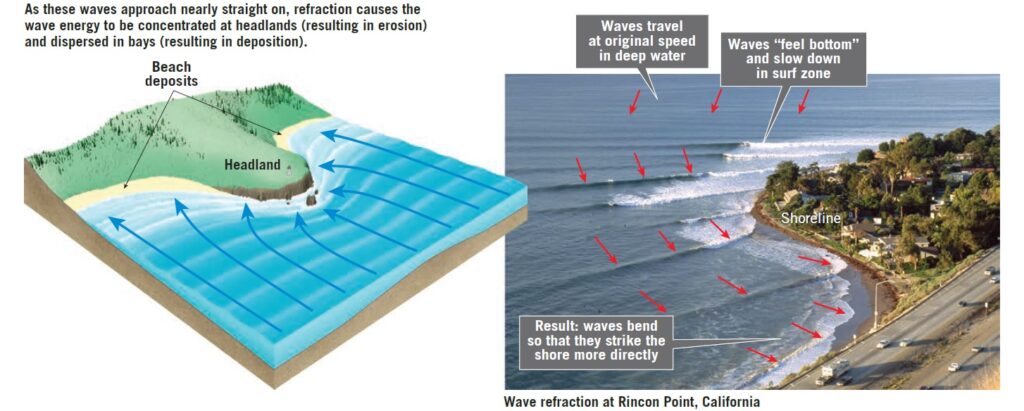Wave Refraction

The bending of waves, called wave refraction, plays an important part in shoreline processes. It affects the distribution of energy along the shore and thus strongly influences where and to what degree erosion, sediment transport, and deposition will take place.
Waves seldom approach the shore straight on. Rather, most waves move toward the shore at an angle. However, when they reach the shallow water of a smoothly sloping bottom, they are bent and tend to become parallel to the shore. Such bending occurs because the part of the wave nearest the shore reaches shallow water and slows first, whereas the end that is still in deep water continues forward at its full speed.
The net result is a wave front that may approach nearly parallel to the shore, regardless of the original direction of the wave. Because of refraction, wave impact is concentrated against the sides and ends of headlands that project into the water, whereas wave attack is weakened in bays.

National Geographic/Getty Images)
This differential wave attack along irregular coastlines is illustrated in Figure 1. As the waves reach the shallow water in front of the headland sooner than they do in adjacent bays, they are bent more nearly parallel to the protruding land and strike it from all three sides. By contrast, refraction in the bays causes waves to diverge and expend less energy. In these zones of weakened wave activity, sediments can accumulate and form sandy beaches. Over a long period, erosion of the headlands and deposition in the bays will straighten an irregular shoreline.
What causes most ocean waves?
The majority of ocean waves are generated by wind. Ocean waves are oscillations of the sea surface most often caused by the frictional drag of wind, with the waves traveling in the wind’s direction. In a cross section, the water within the wave is moving in roughly a circular path, rising up on the crest, advancing, descending, and then retreating in the trough as the wave passes.
Not all ocean waves form from the movement of the wind, however. Rossby waves (or planetary waves) form because of the Earth’s shape and rotation. They always travel in an east to west direction around the planet at about 2 inches (10 centimeters) per second or a few miles a day (at mid-latitudes, the waves can take months-or even years-to cross the Pacific Ocean). They are only a few inches deep, but can be thousands of miles across. Also less common are ocean waves caused by earthquakes, landslides, asteroid impacts, density differences (mostly caused by differences in water temperatures), and changes in atmospheric pressure.
